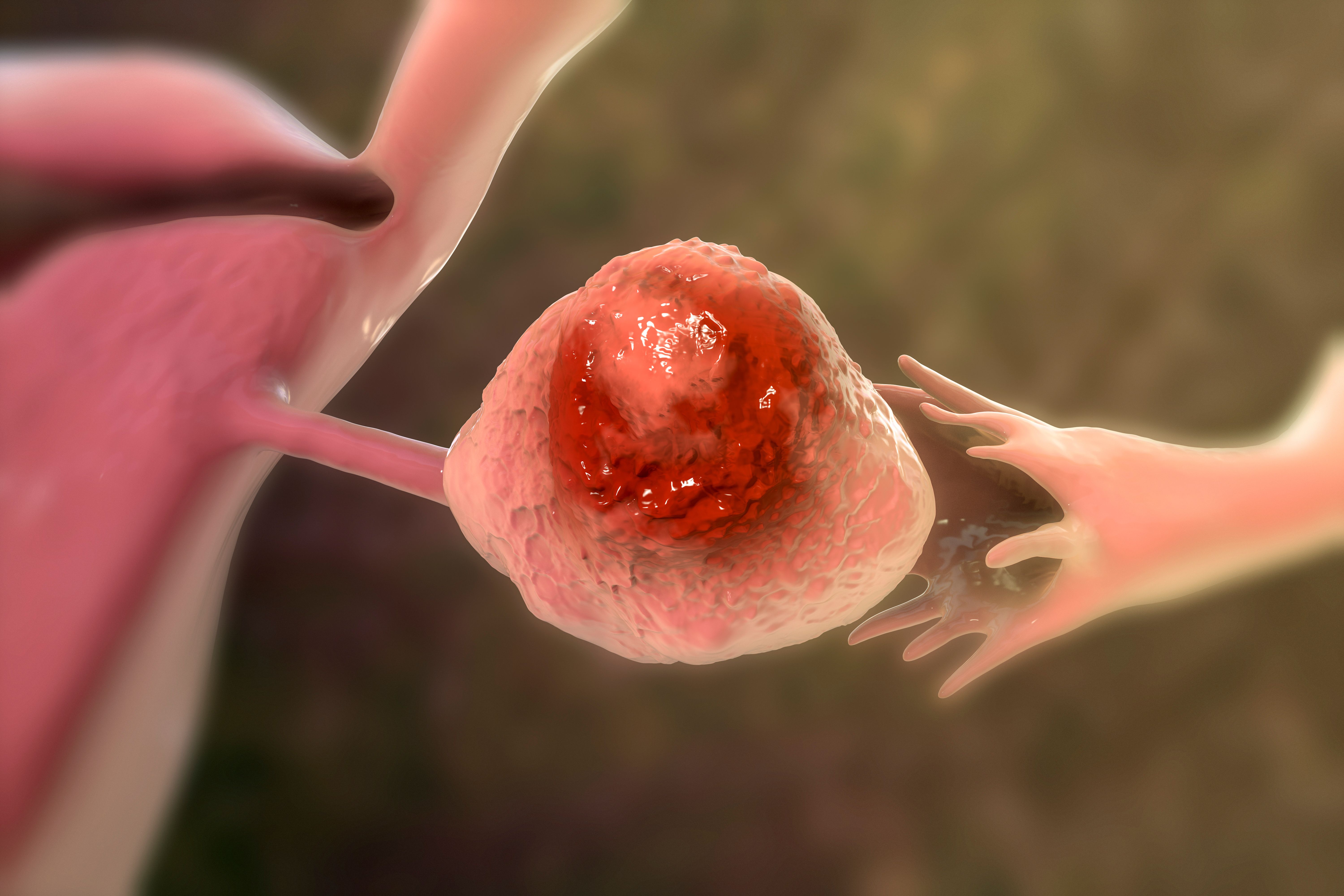News
Article
TTFields Plus Paclitaxel Misses OS End Point in Platinum-Resistant Ovarian Cancer
Author(s):
The phase 3 ENGOT-ov50/GOG-3029/INNOVATE-3 trial found the addition of tumor treating fields (TTFields) to paclitaxel did not provide a statistically significant improvement in overall survival (OS) vs paclitaxel alone for patients with platinum-resistant ovarian cancer, failing to meet its primary end point.
A version of this article was originally published on OncLive®. This version has been lightly edited.
David O’Malley, MD

The addition of tumor treating fields (TTFields; NovoTTF-100L) to paclitaxel did not result in a statistically significant improvement in overall survival (OS) vs paclitaxel alone in patients with platinum-resistant ovarian cancer, failing to meet the primary end point of the phase 3 ENGOT-ov50/GOG-3029/INNOVATE-3 trial (NCT03940196).1
At the final analysis, the median OS was 12.2 months with TTFields plus paclitaxel (n = 280) compared with 11.9 months with paclitaxel alone (n = 278; HR, 1.008). Exploratory findings indicated a potential survival benefit in patients who received 1 prior line of therapy.
The safety profile of the combination was consistent with prior results, proving well tolerated without added systemic toxicities. All data from the trial will be evaluated further prior to releasing the full results of the study with the medical community.
“While the final results of the ENGOT-ov50 / GOG-3029 / INNOVATE-3 trial differ from our initial expectation, these data add important context to the treatment paradigm,” David O’Malley, MD, professor of obstetrics and gynecology at The Ohio State University Wexner College of Medicine and director of the Division of Gynecologic Oncology at The James Comprehensive Cancer Center, stated in a news release. “We see treatment exposure and number of prior therapies are relevant and can drive outcomes, and we will leverage these data as we explore and identify new opportunities to treat this deadly disease.”
INNOVATE-3 is a randomized, controlled phase 3 trial that evaluated the safety and efficacy of TTFields plus paclitaxel in 540 patients with heavily pretreated (≤5 prior lines of therapy), platinum-resistant ovarian cancer.
In March 2022, an independent data monitoring committee declared that the trial could continue as planned without protocol adjustment following a prespecified interim analysis of safety and efficacy.2
To be eligible for enrollment, patients at least 18 years of age had to have epithelial ovarian, primary peritoneal, or fallopian tube carcinoma at the time of diagnosis; a life expectancy of at least 12 weeks; no more than 2 prior lines of systemic therapy in the platinum-resistant setting and 5 prior treatments overall; an ECOG performance status of 0 or 1; evaluable disease in the abdominal/pelvic region per RECIST v1.1 criteria; and ability to operate the NovoTTF-100L(O) system and receive weekly paclitaxel.3
In the study, patients received continuous therapy with TTFields plus 80 mg/m2 of intravenously infused paclitaxel every week for 8 weeks, and on days 1, 8, and 15 of each 28-day cycle thereafter. Patients who were randomly assigned to TTFields were required to wear 4 electrically insulated electrode arrays on the abdomen/pelvis, designed to selectively target and kill cancer cells.1,3
In addition to OS serving as the primary end point of the study, secondary end points included progression-free survival, objective response rate, severity and frequency of adverse effects, time to undisputable deterioration in health-related quality of life (QOL) or death, and QOL.1
The trial closed for enrollment in October 2021, launching the minimum 18-month follow-up period.
“The INNOVATE-3 clinical trial set out to harness the unique mechanisms of TTFields to extend survival in platinum-resistant ovarian cancer,” William Doyle, executive chairman of Novocure, stated in the release. “While today’s update is disappointing, we are encouraged by the signal identified from the exploratory analysis which suggests the potential for a clinical benefit when TTFields therapy is initiated early in a patient’s treatment journey. We are deeply grateful to the patients who participated in this clinical trial, their loved ones, and to the trial investigators.”
References
- Novocure provides update on phase 3 ENGOT-ov50 / GOG-3029 / INNOVATE-3 trial evaluating tumor treating fields therapy in platinum-resistant ovarian cancer. News release. Novocure. August 28, 2023. Accessed August 28, 2023. https://www.novocure.com/novocure-provides-update-on-phase-3-engot-ov50-gog-3029-innovate-3-trial-evaluating-tumor-treating-fields-therapy-in-platinum-resistant-ovarian-cancer/
- Novocure announces favorable recommendation to continue the phase 3 pivotal INNOVATE-3 study of tumor treating fields in ovarian cancer. News release. Novocure. March 23, 2022. Accessed August 28, 2023. https://www.novocure.com/novocure-announces-favorable-recommendation-to-continue-the-phase-3-pivotal-innovate-3-study-of-tumor-treating-fields-in-ovarian-cancer/
- Effect of tumor treating fields (TTFields, 200 kHz) concomitant with weekly paclitaxel for the treatment of recurrent ovarian cancer (ENGOT-ov50 / GOG-3029 / INNOVATE-3). ClinicalTrials.gov. Updated April 20, 2022. Accessed August 28, 2023. https://classic.clinicaltrials.gov/ct2/show/NCT03940196





